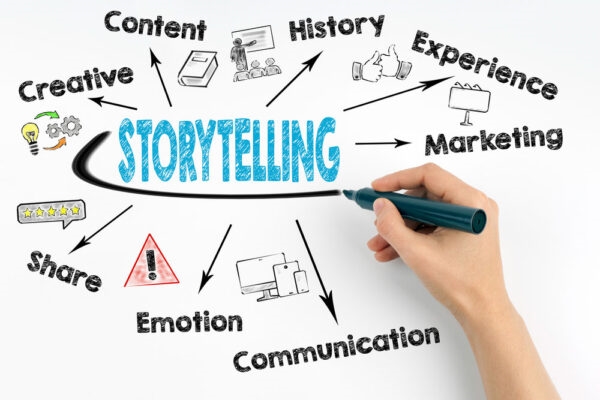Lead Generation for small business often starts at the educational level. Your team isn’t likely to have a professional marketer, so you’re going to need to learn most of the concepts in lead generation from scratch.
We’re going to take a look at some of the primary concepts, especially relating to building social media audiences for small businesses.
As social media grows in size and popularity, it is becoming more essential for marketers to include it in their strategy. In some cases, social media is the sole source of audience growth for a brand.
The good news is that you don’t need to pay for ads right away, although they can be useful for a number of reasons. There are many tips and tricks of social media marketing (SMM), but to really succeed, you need to strive to understand the first principles.
For any small business owner, manager, or marketer interested in increasing their sales, read on.
Shareability Is King
The most important ingredient in social media marketing is shareability. Paying for ad space, posting regularly, and optimizing the niche can all get short-term results, but shareability is king for the long-term.
Increasing shareability is the way to generate leads for your business without a sales team, marketing budget, or CRM. All you need is your time and hard work.

If there’s one takeaway from this article that you need. In that case, it’s that the quality of your content marketing is the most important factor for building your audience.
Spend resources wisely on creating better content than your competitors, and you will achieve natural audience growth.
The number of subscribers, re-shares, and likes will increase organically. It requires the most effort out of any strategy, but in the long run, it’s worth it. All other strategies are secondary to this first principle: that shareability is king.
Small Business Is Not The Same as Medium & Large Business
We propose to think about three levels of spending for lead generation. Your company might not fit exactly in one, but span multiple levels – that’s ok.
Level 1: Small Business
Time is relatively cheap, but you don’t have a lot of money.

Don’t spend on ads, except as an experimental way to validate keywords or to make ad ideas compete against each other. If you don’t have at least $ 1k/month to spend on ads, you should use your time instead as your advantage.
Since this article is talking about Small businesses, we’ll be talking about (mostly) free strategies to increase your audience, work on your brand development or email list size and begin the process of bringing more customers to your products and services. You’re just starting out, so it makes sense to focus on long-term strategies.
Level 2: Medium Business
As the CEO or lead marketer for a medium business, your time is much more valuable. You don’t have time to do everything yourself.
You should still use many of the strategies that are important for small businesses, but begin spending money, outsourcing some marketing work to salespeople on your team or outside your company.
At this stage, you may also start working as a b2b marketer. The acronym “B2B” stands for “Business-to-Business,” and describes a transaction made between two companies, rather than some other combo, like a company and a consumer. Begin advertising to larger clients, and perhaps adjust your pricing to match.
This is where ads come in. Medium Businesses should always spend resources (time and money) in 3 ways:
- Making new content and refreshing old content to organically grow your audience
- Promoting existing content through ads and boosts, and
- Connecting with your pre-existing audience through email and social media
In level 1, it’s assumed that you don’t have a pre-existing audience, and you don’t have the money yet for paid promotions, so you’re focused just on making new content, posts and developing your offer, marketing, and sales pipeline.
Level 3: Large Business
With large businesses, you can afford to pay Agencies or large marketing teams to perform your marketing. The largest audiences can be reached by using Sponsorships.
You’ll want to ensure your marketers have access to conferences and paid events as well.
When you use a sponsorship, your company pays an influencer to promote your business to their audience. Your company may even hire celebrities for marketing campaigns or reach out to athletes, competitions, and events which can create large-scale exposure.
Big business marketing is pay-to-play, and the most successful brands have healthy budgets for all of the categories above.
What is Lead Generation?
Lead Generation, or “Lead Gen,” is the process of creating interested prospective customers with strategic exposure to marketing content, sales content, or existing customer content.

By collecting information on the prospective customers, you can segment them into different classifications and more effectively serve content to them based on their predicted interest levels.
It’s based on the principle that people can be oversold and quickly turn off to the idea of purchasing your product or service.
However, by warming them up slowly, a much higher percentage of your overall audience will convert to a paying customer, albeit more slowly.
The percentage of people exposed to your advertising that convert to customers is called the “conversion rate.”
If the first principle of lead generation is about increasing your conversion rate, the second principle is about increasing your audience. The total number of customers, and therefore revenue, is essentially conversion rate x audience size.
By increasing your audience size, you will increase the number of sales, even if your conversion rate stays the same.
Lead generation can be approached from many different angles, and your company should consider the ROI (Return on Investment) of each potential audience source.
Social media today is huge, but so is email marketing, search engine optimization, ads in search, and even print media.
It goes without saying that a multi-pronged marketing strategy is best, but if you’re focusing on social media, there are some low hanging fruits to pick off first.
What Is Social Media Acquisition?
Social Media Acquisition is the principle of adding potential customers to your social media audience. Whether liking, sharing, subscribing, or viewing on a friend’s news feed, an audience consists of the sum total of actual viewers of your content.
People use social media to stay connected. With the news, with friends and family, and with products and services. People are driven by the desire to find like-minded ideas, and they join niche communities where many people share similar interests.
Understand and Leverage The Structure of Social Circles
In society, people gravitate to social circles because they feel a sense of community. In evolutionary psychology, it’s understood that this desire to gather in a group evolved as a survival instinct.
Now, people construct online social circles and gain similar feelings of group engagement, but there are many types of such circles.
A niche community might be a page or a group, and your company can take advantage of the community by posting useful content.
As the CEO, you can ask to join the group, and later, you can gain a positive reputation by sharing content, answering questions, and joining in discussions.
You might even post your contact information as you begin to build your personal brand, and to increase your name recognition.
The No. 1 Free Lead Generation Strategy
The engagement that you get from niche communities can cause your content to be seen by huge audiences and maybe even go viral. Best of all, sharing this content is completely free and just requires your time and effort.
Social Media niche communities aren’t the biggest groups on social media, however. The largest groups are actually influencer audiences.
Many social media groups have members in the hundreds or thousands. Influencers can have followers in the hundreds of millions.
You might not think of an influencer as a group, but an influencer has direct access to all of their followers.
As a follower, you can also gain access to that very large group of potential leads by tagging the influencer, discussing topics with them openly, or when they share your content.
Although the chances are relatively low that they’ll share your content, you can increase your chances with some preparation.
Adapt First, Then Create
You’re probably not thinking about building a new social media platform, but you might be thinking about creating groups or threads for yourself.
Consider instead finding niche communities that already exist and leveraging their followers to bring leads to your business.
Each social media site has different rules, look and feel, and styles of content. Pages on LinkedIn might be a good place to look for customers ready to do business.
Hashtags on TikTok or Instagram are a good place to engage with personalities or influencers that might think your products or services are cool, fun, or trendy.
Take a look around on Reddit and understand what questions people are asking. Look on Facebook, and see how businesses promote themselves.
You can gauge the competition in your business category by looking at similar businesses to yours, and seeing how much engagement they have on their posts.
Once your brand has a loyal following, only then should you create your own groups. Other companies will look towards you much in the same way as you look at them now- as an example of what to do, and to gain access to your followers.
For that reason, they will follow you, opt-in to receiving your content and messaging, comment on your posts, and compete for your reshares and access to your audience.
Why Do People Share?
There are a few driving factors that are almost always involved when it comes to sharing content. Less than one in 500 people find social media posts worth sharing.
Think about it – when was the last time you re-shared something? How many posts have you seen between posts that were good enough to share?
Making posts that are good enough to share is an art form in itself. There are a few tricks you can use, though, to create the most share-worthy content possible.
Uniqueness
The worst type of post is when writers read the top ten posts in the category, then make a cloned post, slightly changing the wording.
It’s no better or different than the original – why wouldn’t people skip over your post and just share the original post?
Even if you lock into a great idea – if it isn’t yours, then people won’t want to share it as much. Strive to create 100% unique content, and you’ll have much higher lead generation.
Perspectives: If you must talk about an unoriginal idea, try creating a new perspective. Your company might have a use case for a well-known tool or concept that is unique and interesting. Lead with that, and you’ll have a much better chance of being re-shared.
The Skyscraper Method: Another way to become unique is simply to create better content than the original. If your content is answering a question, teaching, or explaining an idea, you can create better content that tells the story more clearly.
This so-called skyscraper post must be significantly better than the best/most popular content on the subject already.
In order for this idea strategy to work, you need to find posts that are popular but poorly written or that could be done better. You can then rewrite the content in a better way and essentially redirect the followers from the original.
It’s a lot of work, but that’s why there’s an opportunity for you to spend the time and make truly deserving content.
Storytelling

Source: Iconmarketing
By developing relatable characters, you can create much more engagement in your story. It’s hard to talk about abstract topics in this way, but when you create actions, movement, and sensory experiences with your characters, people engage more.
In the context of social media, this means using faces, human figures, headlines, or text that speak intimately and personally.
Anecdotes or stories are engaging and are a necessary ingredient especially when your product or service is relatively dry, academic, or numeric in nature.
You can personalize characters, or jump-off of pop culture, cliches, and idioms to create comedy and a sense of cleverness.
The trick is to make your audience feel as though they’re clever themselves for getting your clever joke, without making your joke too clever so that no one understands it.
Combining humor with genuine catchiness is the most powerful. For example, insurance companies often use comedic situations and catchy jingles to lure likes, reshares, and followers.
These new leads aren’t often aware that their familiarity with these stories and characters is subconsciously making them more likely to purchase from that company at some point in the future.
Even polarizing or disliked characters, such as Allstate’s “Mayhem,” played by Dean Winters, may be disliked by many but still extremely memorable.
Allstate’s great marketing team knows that the commercial won’t make you go out and switch today. But someday, after you purchase your next vehicle, and the dealership gives you the choice of Allstate and two other companies you haven’t heard of, which one are you going to choose?
At that moment, after the stress of haggling with the dealership, test driving, and finally settling on paperwork, you’ll see the brand name and think back with a chuckle, with lighthearted feelings towards a company you may know little about other than the name.
Utility
People re-share content that they find useful. It’s hard to make this type of content because it requires proper research, explanation, and summarizing.
You’ll need to break complex topics down into step-by-step explanations or provide insights and original research.
The utility is about saving your audience and followers time, money, or effort. If you’re trying to help them in some way, make sure you’ve made it as easy as possible for them to accomplish the task.
For example, a hotel company trying to promote a discount on rooms for a holiday weekend might link to the hotel’s main website in a social media post. Users won’t find this as useful as a link directly to the reservation page, with the promo code pre-filled.
Try to minimize the number of clicks required for users to engage with your post. You can also perform A/B testing to determine which post people find easier to use.
A/B testing is when you segment your audience in a somewhat random way, like a randomized controlled trial. You can create two similar posts, with a slight difference in wording or in the hyperlink.
You can also serve the post to different areas, segmenting groups by demographic and location, to see how performance differs in different places.
Use performance indicators to see which post performs better to your target audience, then promote only the better post with paid promotion or boosts.
Authority
Authority is when you provide your audience with genuine, original data and information, which normally isn’t available anywhere else.
You can increase the authority of your post by including a quote from an expert, but it’s best to also include numbers, percentages, or infographics that present your information.
These can be poll results, case studies, or unique historical data that your company has collected. Sometimes, this information might be well-known or obvious, but you can still make it useful by taking a unique perspective.
You can even make educational content like webinars or white papers that explain how your product or service works and are immensely useful to the prospective customer.
On the landing page of your website, you can obtain the contact information of the target customer with a popup, allowing them to view the webinar or download the whitepaper after entering their information.
Inbound vs. Outbound Leads, CTAs, and More
Lead generation sales is a form of technical, highly statistics-based sales that requires a lot of metrics and performance indicators to talk about in a sophisticated way.
Although you can get started by just using the built-in analysis by social media ad management dashboards, you can use many other analytics to track your post’s performance. One of the most important is the conversion rate.
By using tracked links, you can actually determine the percentage of people who buy your product or service after clicking on a social media post.
These tracked links are picked up by your analytics software, then you can use this rate as an overall indicator of your content’s performance.
Social media can also be a source of SEO (search engine optimization) for your service or product landing page. It’s true that getting many re-shares from a social media site isn’t worth as much as having shares across many different domains on the internet.
Still, these links back to your website can help your website rank higher on search engines.
Posting engaging content on social media encourages people to leave comments and feedback. Good feedback and reviews, such as on a business page, can lead to referrals from your happy customers.
Encourage your existing customers to reach out on social media. You want happy customers to share their happiness with others, so make it easy for them too.
Social Media Lead Qualification
By tracking your customer engagement with social media stories and posts, you can qualify the leads.
What this means is that when the leads click through to your website from particular posts, they are ready to see the next stage of content. Some posts may be more marketing-oriented, while others are sales oriented.
Sales oriented posts, which have a button to “sign up now for a free trial,” indicate much higher purchase intent than posts that say “learn more.”
Customers that click on the “free trial” link are sales-qualified leads. The other customers are marketing qualified leads (MQL). By making different posts for different qualification levels, you can increase your chances of conversion.
Many social media marketing management software suites enable a lead qualification tool called “lead scoring.” This is a marketing automation tool that assigns a numerical value to the leads depending on their actions.
For example, if the lead clicks on a sales-related CTA (call to action) link, they might be qualified as a sales lead, with a high lead score.
This lead score might trigger your CRM (customer relationship management) software for a follow-up call if you have the lead’s phone number, email outreach, or to categorize the social media lead into a sales-only promotions category.
How To Increase Your Conversion Rate?
As you now know, at the end of your sales funnel, your conversion rate is king. You can get as many leads as you want, but with a weak conversion rate, you’ll have no sales.
You need to balance the resources that you spend on social media marketing by estimating how much it will cost to conduct ads and create new posts.
The CPC or cost per click, also known as PPC (price per click) is an SEO metric that can allow you to determine low-hanging fruit and strategically spend effort on low-cost acquisitions.
Many tools give marketers the ability to monitor this metric and many more, such as the number of engagements, website visitors, popup clicks, and even the amount of time users spend on your website pages.
Simplify Your Workflow With Great Lead Generation Tools
When you’re just starting out with lead generation, you might use the built-in social media tools. That’s ok, but soon, you’ll find yourself running out of time.
In-comes SMM software. As a brand marketer, you’ll find this software to be a breath of fresh air, as it hastens many workflows and rewards you with more time to work on refining your content.
Social media marketing has a lot in common with other lead generation pipelines, and so many social media marketing platforms are highly integrated with CRMs and email marketing tools.
It makes sense because the same data you use to qualify your leads is what you use to make decisions about your CRM.
If your existing customers get support over email and social media, you want the support team to be able to work all in one place.
You might think about cold calling or cold emailing when it comes to CRM. That’s not the case anymore with lead scoring. With the wealth of data available, we can now judge brand awareness and qualify only high-quality leads for follow up in the CRM.
This process not only saves time for your marketing team or sales reps, but it creates a more satisfied audience because you only cold email customers that you know have a high interest already.
Now that you have the basics of social media marketing, a lead generation down, and some ideas about where to begin, get out there and start making new content!
Your brand awareness might be incognito now, but with a bit of effort, you can start growing your brand’s popularity. Audiences start small and grow exponentially, so don’t be surprised if it takes some time.
But if you start early with the right principles, you can look forward to a growing follower base for a long time to come.
Business & Finance Articles on Business 2 Community
(51)







